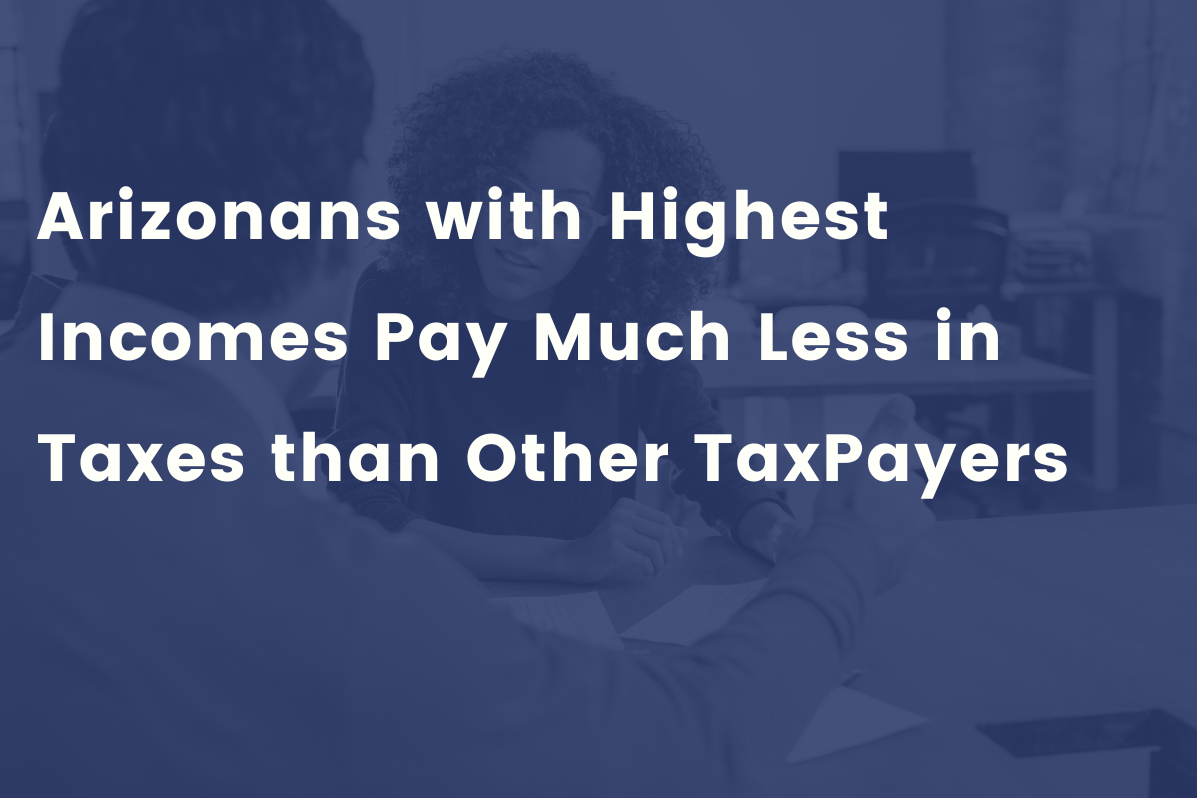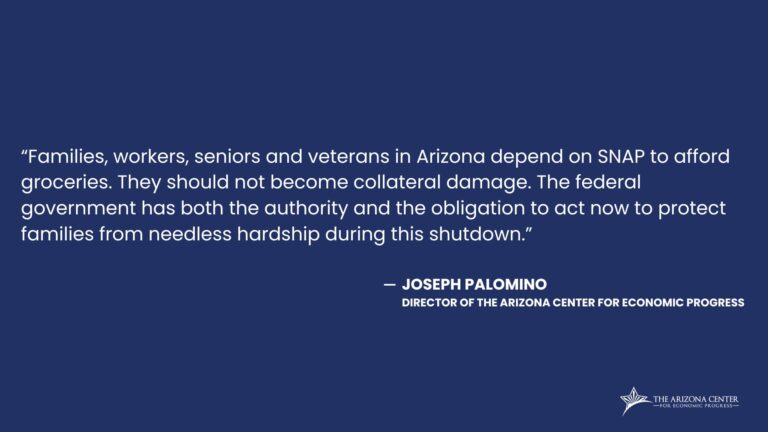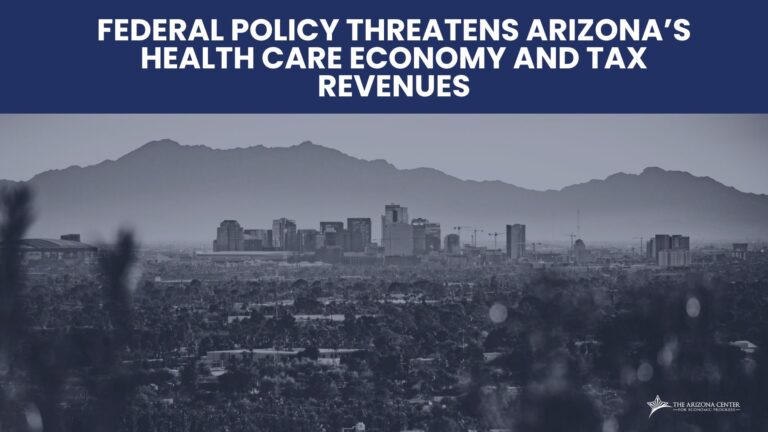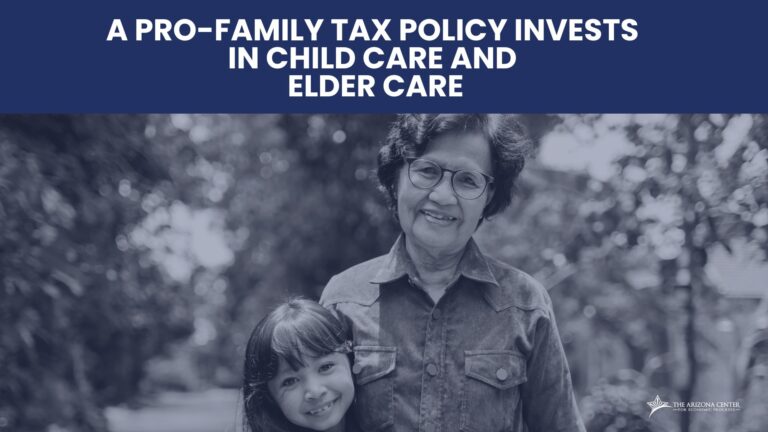
Arizonans with Highest Incomes Pay Much Less in Taxes than Other TaxPayers
A new report released by the Institute on Taxation and Economic Policy (ITEP) highlights how recent tax policy changes have increased inequity and decreased fairness among taxpayers depending on income. In Who Pays? Seventh Edition, ITEP underscores two events that resulted in Arizona becoming more regressive than it would be otherwise: “… by undoing a 2020 voter-approved tax increase on the wealthy and then cutting income taxes instead, Arizona’s recent changes have led it to drop to 13th most regressive from what would have been 27th—had the voters’ will been heeded and no further tax changes made.” The Arizona Center for Economic Progress advocates against regressive tax policies and instead advocates for tax policies that create a level playing field.
What makes a tax “progressive” or “regressive”?
These terms have to do with who pays more of a given tax, as a share of their income and wealth.
A regressive tax is one in which those with lower incomes and wealth pay a greater share in taxes (relative to their income).
A progressive tax is one in which those with higher incomes and wealth pay a greater share in taxes (relative to their income).
Progressive taxes can be used to offset the impact of regressive taxes with the goal of creating a proportional tax system in which everyone pays the same percentage of their income in taxes.
Few Arizonans Benefited from Recent Tax Law Changes
In 2020, Arizona voters approved Proposition 208, Invest in Education. The proposition would have added a 3.5% surcharge on taxable income above $250,000 for single filers and $500,000 for married filing jointly filers. A court challenge resulted in the proposition being overturned before it became effective. The surcharge would have provided an estimated $827 million in dedicated funding for pay increases for teachers and other school personnel.
In 2021, the Arizona legislature adopted a flat individual income tax to replace the graduated individual income tax. Prior to the change, Arizona had four tax brackets with rates ranging from 2.59% to 4.50%. As of January 1, 2023, Arizona has a single individual income tax rate of 2.5%. Both the adoption of the flat tax and the overturning of the surcharge made Arizona’s tax system much more regressive than it would otherwise be as well as reduced state revenues by more than $2.8 billion per year.
Arizona’s Tax System Expects More from Those with Less Income
In Arizona, the lower the income, the higher the effective state and local tax rate. Taxpayers with middle incomes ($42,800 to $70,500) pay $9.84 per $100 of income compared to $5.02 for taxpayers with incomes over $596,600. Taxpayers with incomes less than $22,200 pay $11.83 per $100 of income. Without the recent tax cuts described above, middle income earners would pay $0.09 more ($9.93) per $100 of income, while top earners would pay $2.30 more ($7.32).
What is an effective tax rate?
The effective tax rate is calculated by dividing taxes paid by income. It is different from the rate used to calculate taxes owed. For example, the individual income tax rate of 2.5% is not applied to all income but to income adjusted for deductions and exemptions. Tax credits also reduce the taxes paid and reduce the effective tax rate.
It's the Sales Taxes, Not the Income Taxes, that Demand More of Arizonans
Many people think of income taxes when they think about tax liability. In Arizona, however, it is sales and excise taxes that are more costly. Middle income taxpayers are paying $6.19 per $100 of income in sales and use taxes compared to $1.17 for income taxes. Those with the lowest incomes pay $7.67 in sales and use taxes compared to $0.31 in income taxes. Only the top earners pay more in income taxes than in sales and use taxes - $1.77 in income taxes compared to $1.65.
Tax Law Changes Mean Not Enough Revenue to Cover Approved Spending
Both the Governor’s and legislature’s budget offices indicate that revenues are not coming in at the level expected last spring when the current year’s budget was passed. Although the details differ between the two offices, both project revenue deficits totaling more than $2.1 billion beginning in the current fiscal year and running through fiscal year 2026. These deficits are prior to addressing private school tuition vouchers and other funding needs that will be identified as the budget process progresses through the legislative session.



